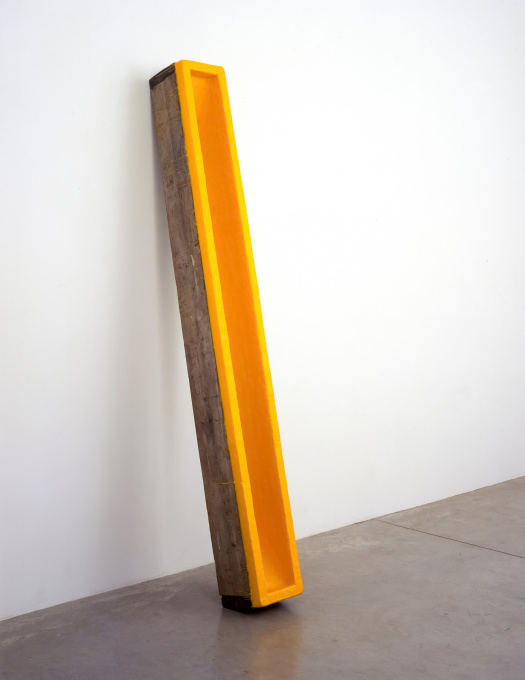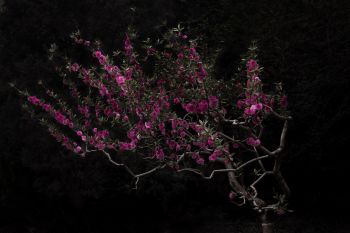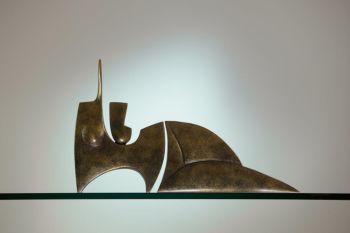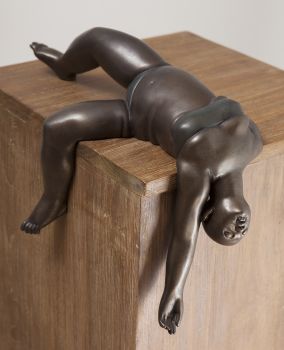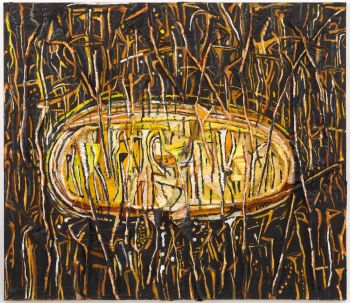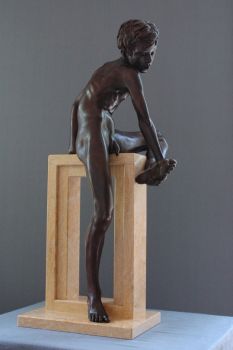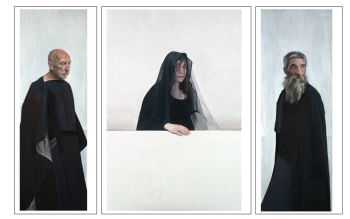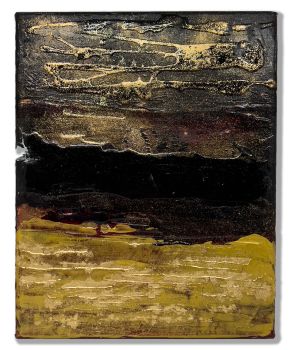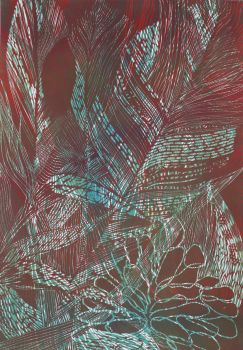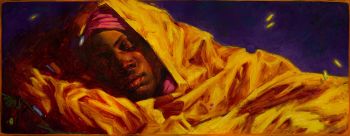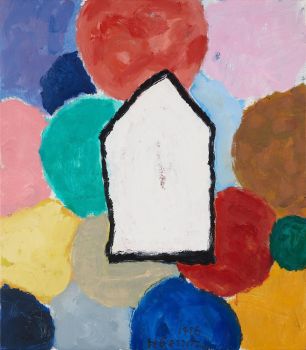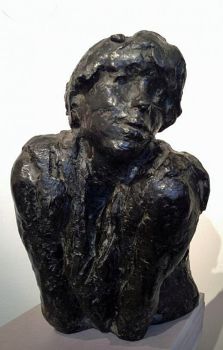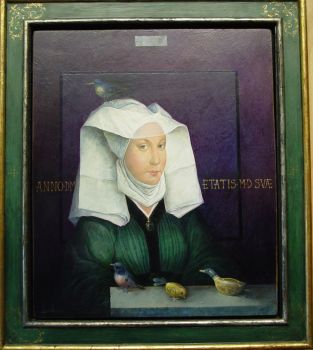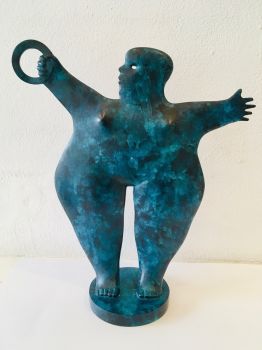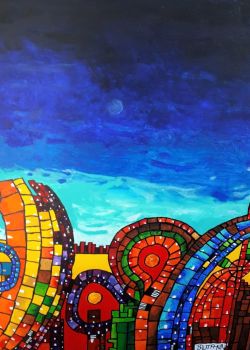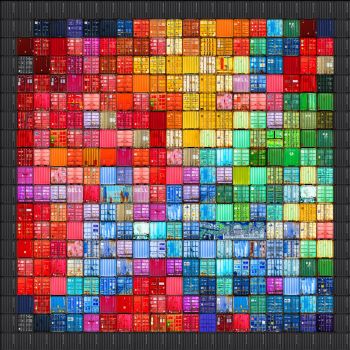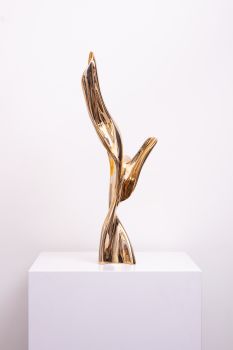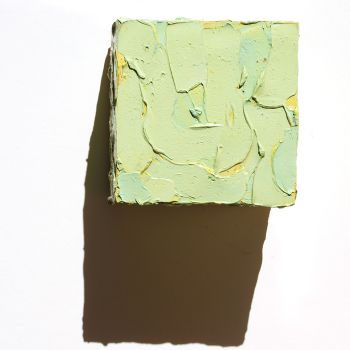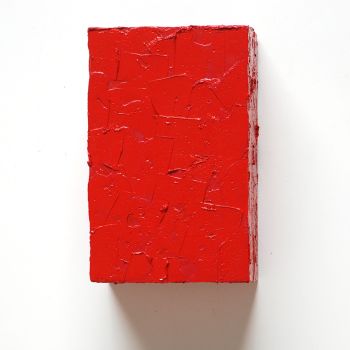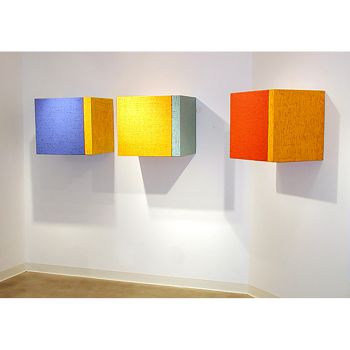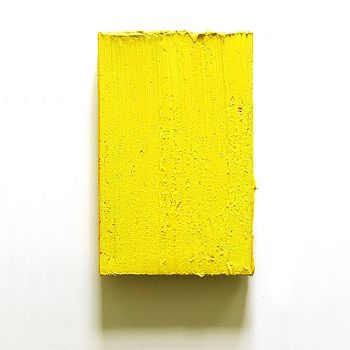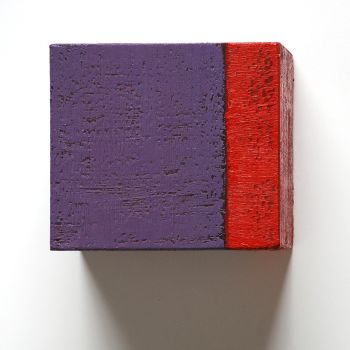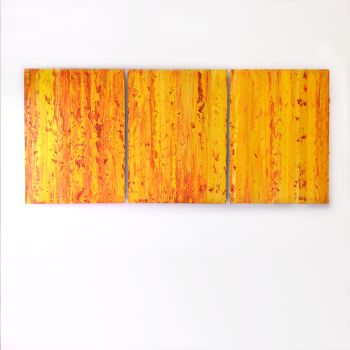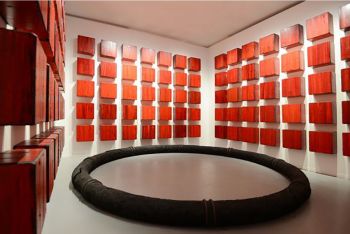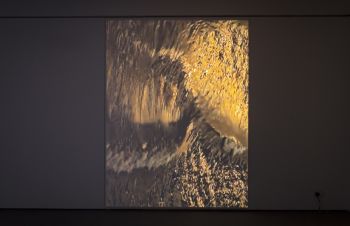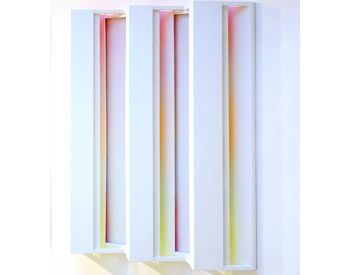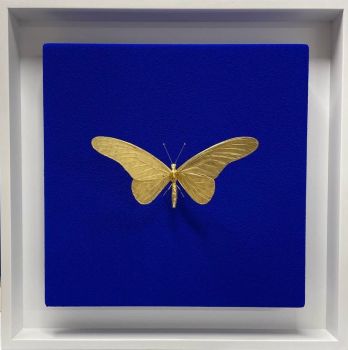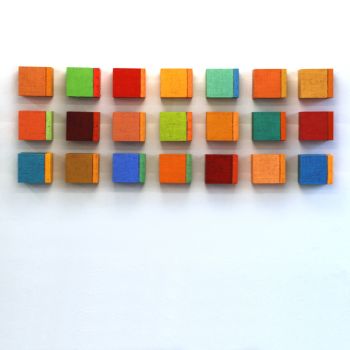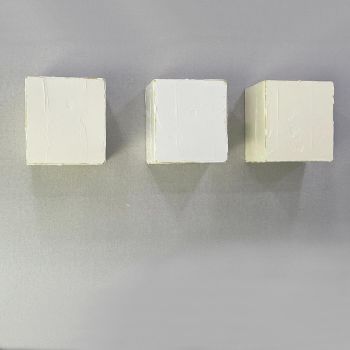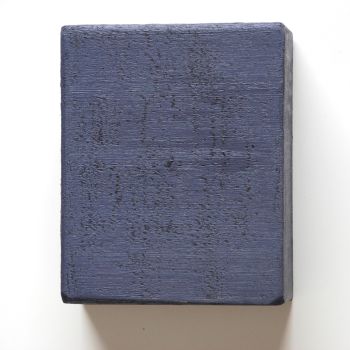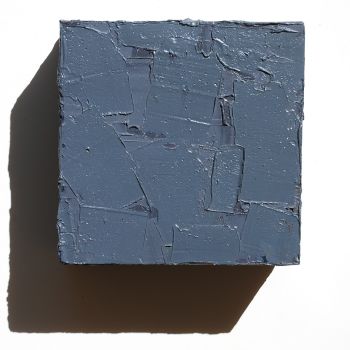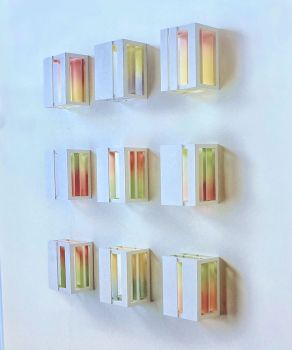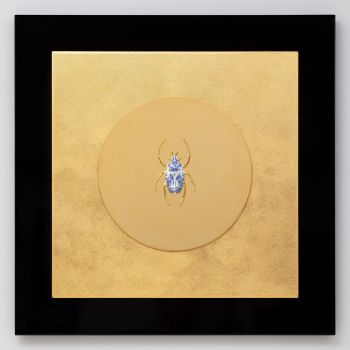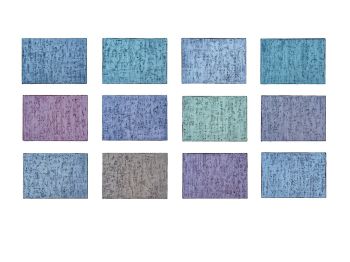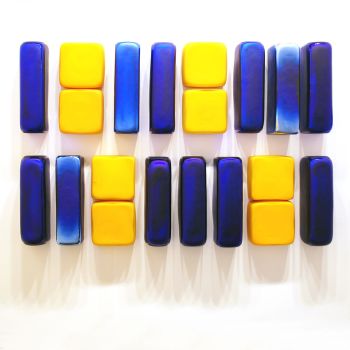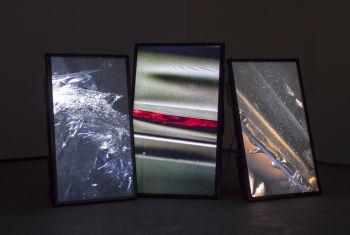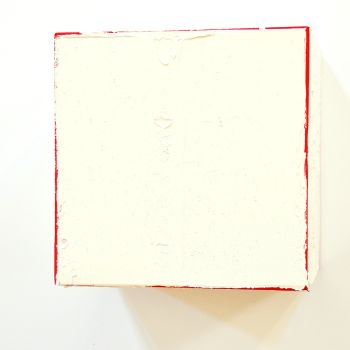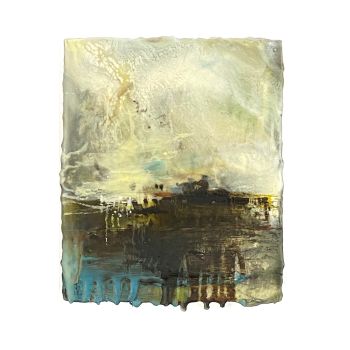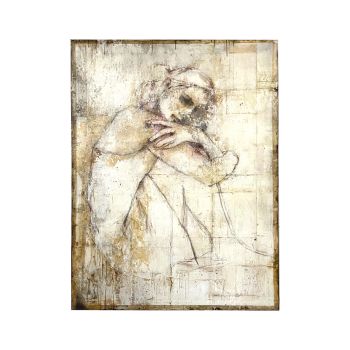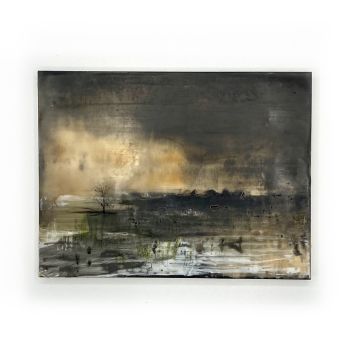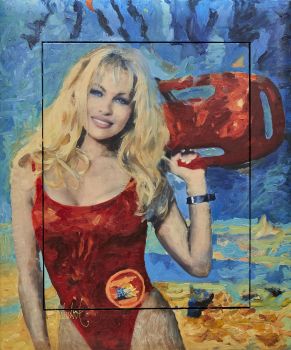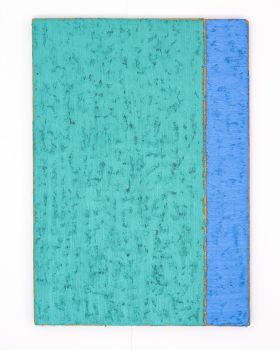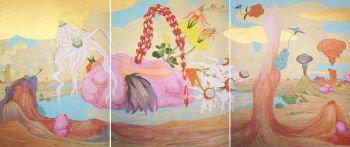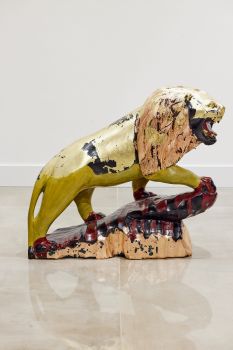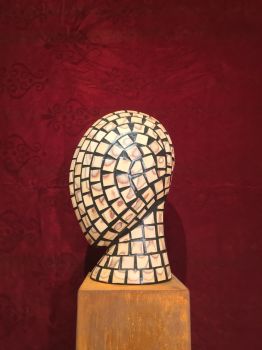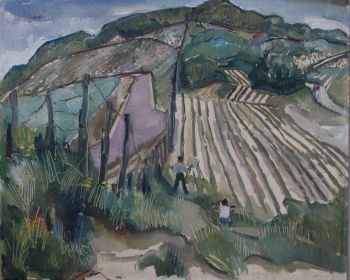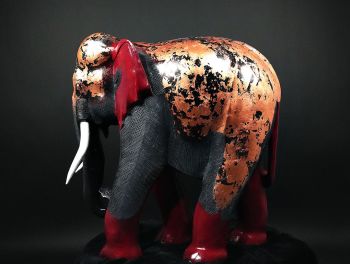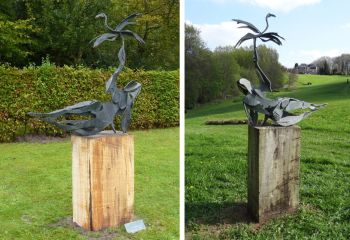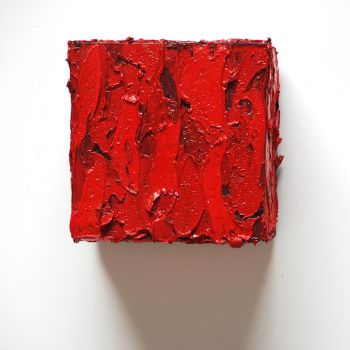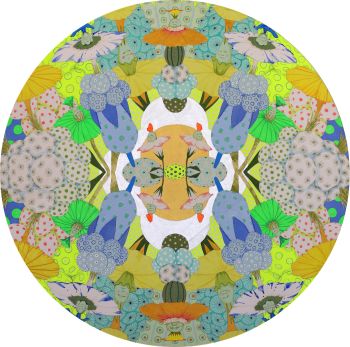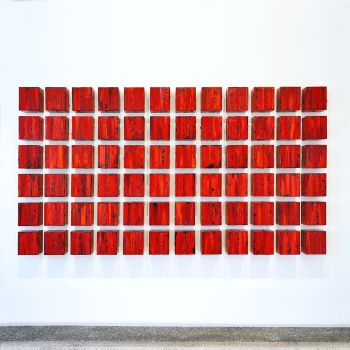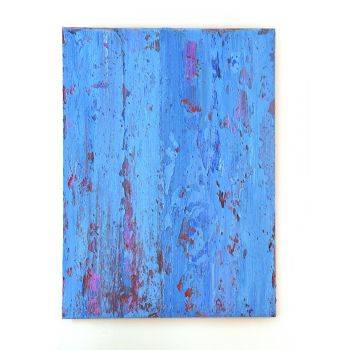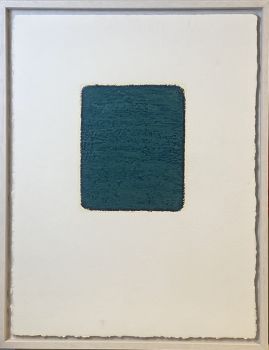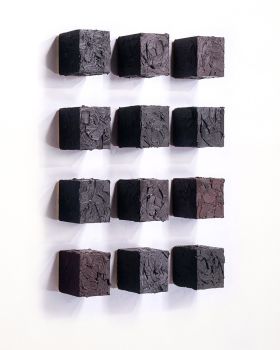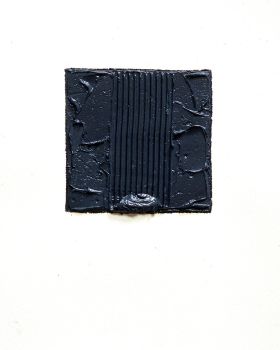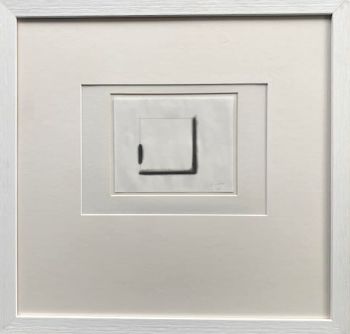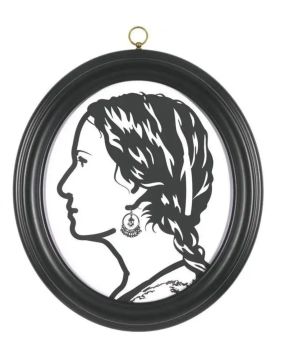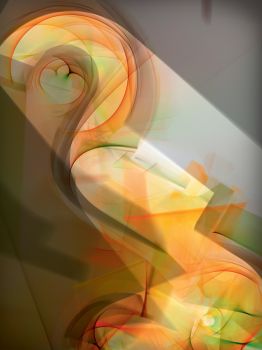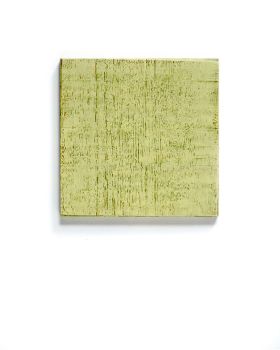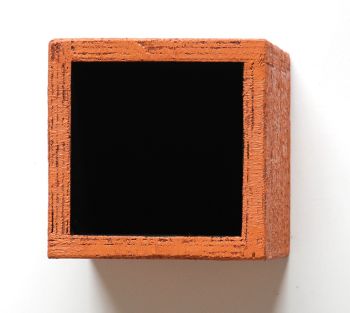Troug- Cadmium Yellow Deep 2003
JOHANNES GIRARDONI
BoisLa cireCire d'abeille
254 ⨯ 28 ⨯ 55 cm
ConditionNeeds restoration
€ 5.000
Gallerease Selected
- Sur l'oeuvre d'artExhibited in Museum Ludwig 2005
Part of Series 2003–2011, Beeswax, pigment, wood
Light Reactive Organic Sculptures comprise an extensive body of work that has evolved over the past two decades. The work focuses on reductive investigations at the intersection of sculpture and painting, and explores the continuously shifting relationship between light and material. Despite an elemental material vocabulary — found wood, beeswax, and pigment — the work’s physical constellation becomes both the carrier of an explicitly painterly event, while also being the foundation of an immaterial phenomenon. The pieces are often examinations of phenomenological processes, where a hollow or empty space — a tangible emptiness — turns out to be the actual center of the work. Opposites and contradictions, as well as the complex dialectic between them, are the fundamental themes. The orchestration of material and light, presence and absence, things found and things formed, all resist clear fixation, thereby maintaining and creating works with their own non-derivable reality.
The primary material organization is found wood that forms the base for color built with pigment and beeswax. The wood is harvested from urban debris at building constructions and deconstructions, and in its worn and deteriorated condition, creates an instant history. These structures become the foundation for an architecture of color in which the material is color, and the color is material. Built by suspending varying degrees of pigment in layer over thin layer of beeswax, light travels into the wax and encircles the pigment. This results in light reactivity, and juxtaposed to the static, aged structure of the wood, the sculptures’ pigmented wax evolves and adapts to changing ambient light situations. These sculptures hold light.
"Girardoni’s use of wax, influenced by Jasper John’s paintings with encaustic — such as Flag and Target — and related to Brice Marden’s use of the material in his opaque, monochrome pictures from the 1960s, ultimately led the artist to sculptural procedures: “Wax catalyzed the move away from ‘painting’ … The beeswax allowed me to ‘build’ color.” Girardoni prefers using wooden slats, boards, or parts of wooden beams as construction material, where traces of their use have been recorded. To this the artist applies the material color — pigmented wax. Through their ready-made character the artist instills a uniqueness and reference to life in the objects. At first glance, the works, which are oriented towards geometric forms and series, seem like minimalist art in the succession of Carl Andre, Sol LeWit and Donald Judd. The major difference in Girardoni’s works, however, is that they have an organic and human atmosphere, while the cubes, fences and plates, due to their industrial production, emanate coolness. (…) Even though Girardoni leaves both the inner and outer panels abstract, he is nevertheless concerned with a contemplative experience, and not solely with a matter-of- fact inventory of color, material, and structure. Joseph Beuys had attributed beeswax a symbolic-spiritual function, that of warmth and energy. These may also be experienced in Girardoni’s objects, paired with painterly, coloristic, and tactile qualities".
– Florian Steininger - Sur l'artiste
Réputé pour sa fusion captivante de médiums numériques et analogiques, Johannes Girardoni, artiste austro-américain né en 1967, a laissé une marque indélébile dans le domaine de la sculpture et de l'art de l'installation. Des petites créations complexes aux vastes merveilles lumineuses interactives, le répertoire artistique de Girardoni couvre un spectre à couper le souffle.
Élevé dans un village pittoresque niché près de Vienne, le parcours créatif de Girardoni a transcendé les continents lorsqu'il a déménagé en Californie avec sa famille en 1982, à l'âge de quatorze ans. Ses années de formation au Bowdoin College, dans le Maine, de 1985 à 1989, où il a poursuivi une double spécialisation en histoire et en art, ont jeté les bases de son odyssée artistique. Notamment, au cours de son mandat à Bowdoin, Girardoni a perfectionné son métier en tant qu'artiste invité au prestigieux MIT Media Lab.
L'évolution artistique de Girardoni d'une expression bidimensionnelle à une expression tridimensionnelle reflète son penchant pour l'expérimentation. Influencée par les techniques de peinture à la cire chaude de sommités comme Brice Marden et Jasper Johns, son œuvre incarne un jeu fascinant de contrastes formels.
Le monde a remarqué l'ingéniosité de Girardoni avec sa première exposition à New York en 1991, catalysée par l'œil avisé du conservateur d'art Friedhelm Mennekes. Au fil des années, l'empreinte artistique de Girardoni s'est étendue à l'échelle mondiale, avec des vitrines notables telles que l'exposition Personal Structures de 2005 au Ludwig Museum, en Allemagne, et sa participation à l'exposition Origins parrainée par le Hudson Valley Center for Contemporary Art à Peekskill, New York.
L'une des contributions marquantes de Girardoni est le concept de « sculpture refrequenced », illustré par son installation « 7 Minutes 20 Seconds » de 2009 à l'exposition Creative Migration du Forum culturel autrichien à New York. Son opus magnum, « La (dis)apparition de tout », dévoilé à la 54e Biennale de Venise en 2011, fusionne harmonieusement la lumière et le son dans une expérience immersive et interactive.
L'année 2013 a été marquée par la fascinante vitrine de Girardoni intitulée « Off and On » au Nye & Brown à Los Angeles, en Californie, présentant des installations avant-gardistes qui transmuent la lumière et le son grâce à une technologie de pointe. Notamment, son exposition-enquête de 2018 à Levy Gorvy Londres, intitulée « Sensing Singularity », présentait l'installation révolutionnaire « Metaspace V3 », témoignage de l'esprit pionnier de Girardoni dans l'intégration d'éléments pilotés par logiciel avec l'interaction humaine.
Parmi ses œuvres remarquables, « The Infinite Room », une sculpture monumentale nichée dans l'État de Washington, et « Spectral Bridge », une merveille architecturale ornant la Spectral Bridge House à Venice, en Californie, témoignent des prouesses artistiques de Girardoni. Un tome intitulé "Johannes Girardoni", publié en 2007, offre un aperçu complet de son voyage artistique, tandis que son inclusion dans les collections prestigieuses d'institutions comme le Fogg Museum de l'Université Harvard et le Museum Ludwig de Cologne, en Allemagne, souligne son héritage durable. .
Les contributions exceptionnelles de Girardoni ont été acclamées, culminant avec des distinctions telles que le prestigieux prix Francis J. Greenburger en 2019. Les critiques et les connaisseurs ont loué le travail de Girardoni pour sa résonance évocatrice et sa fusion innovante de médiums. Des paysages luxuriants de Hongrie aux rues animées de New York, l'art de Girardoni transcende les frontières, invitant les spectateurs à un voyage transcendant d'exploration et d'introspection.
Êtes-vous intéressé par l'achat de cette oeuvre?
Artwork details
Related artworks
- 1 - 4 / 24
 Sélectionné par
Sélectionné parDanny Bree
1 - 4 / 24Artiste Inconnu
UITGEBREIDE FEESTDAGENIKOON MET PASSIECYCLUS19th century
Prix sur demandeHeutink Ikonen
1 - 4 / 24- 1 - 4 / 12

